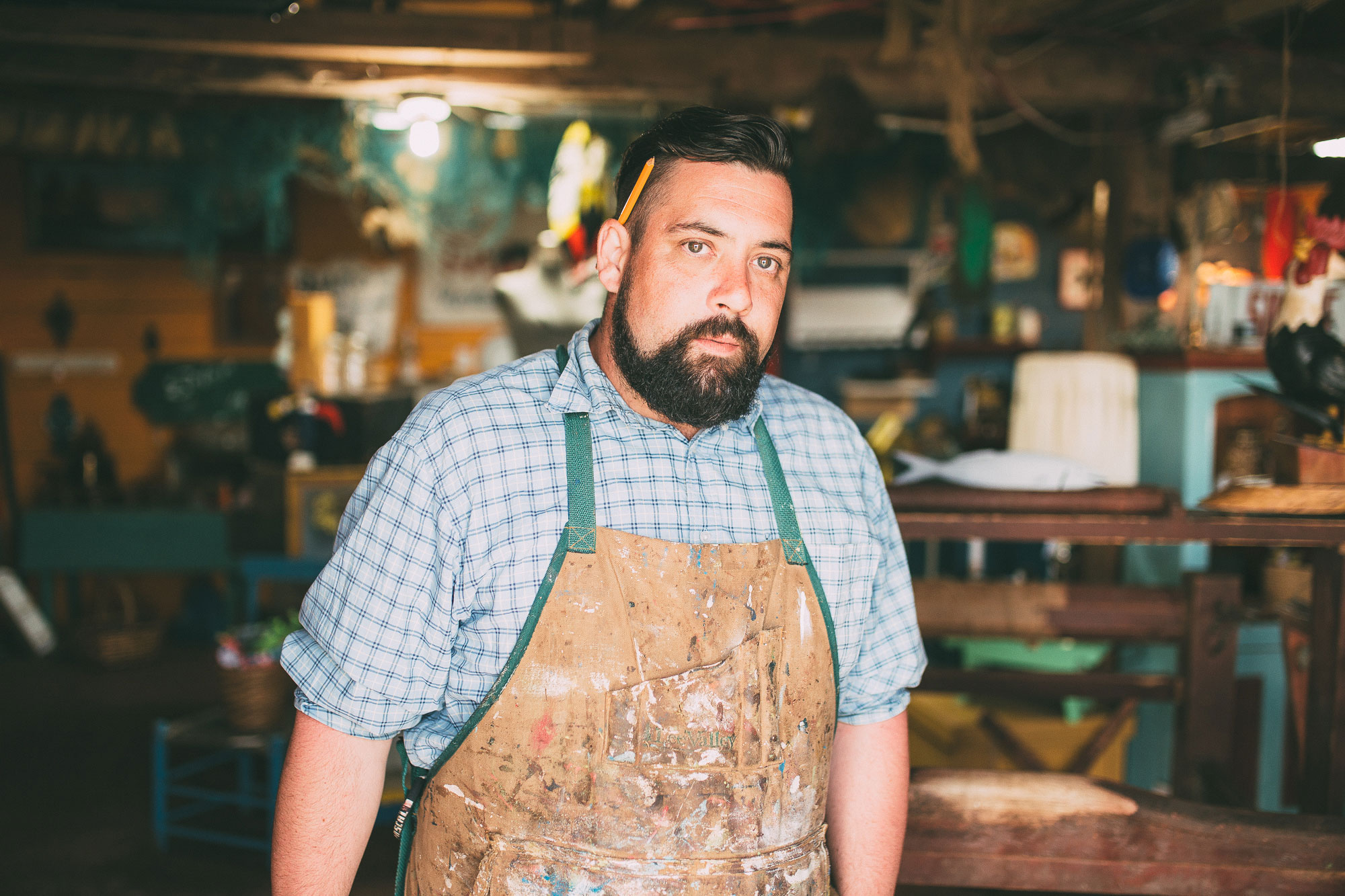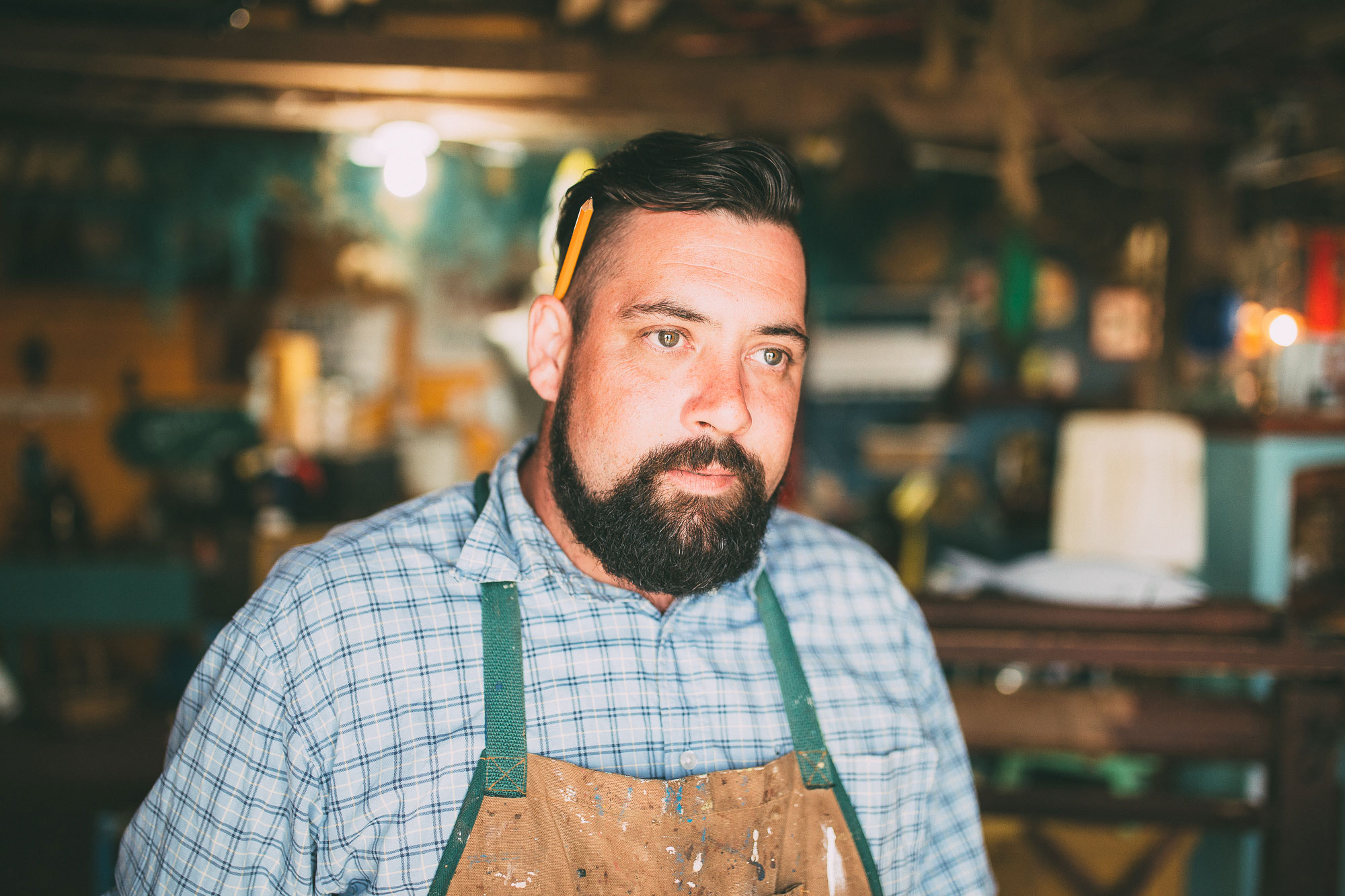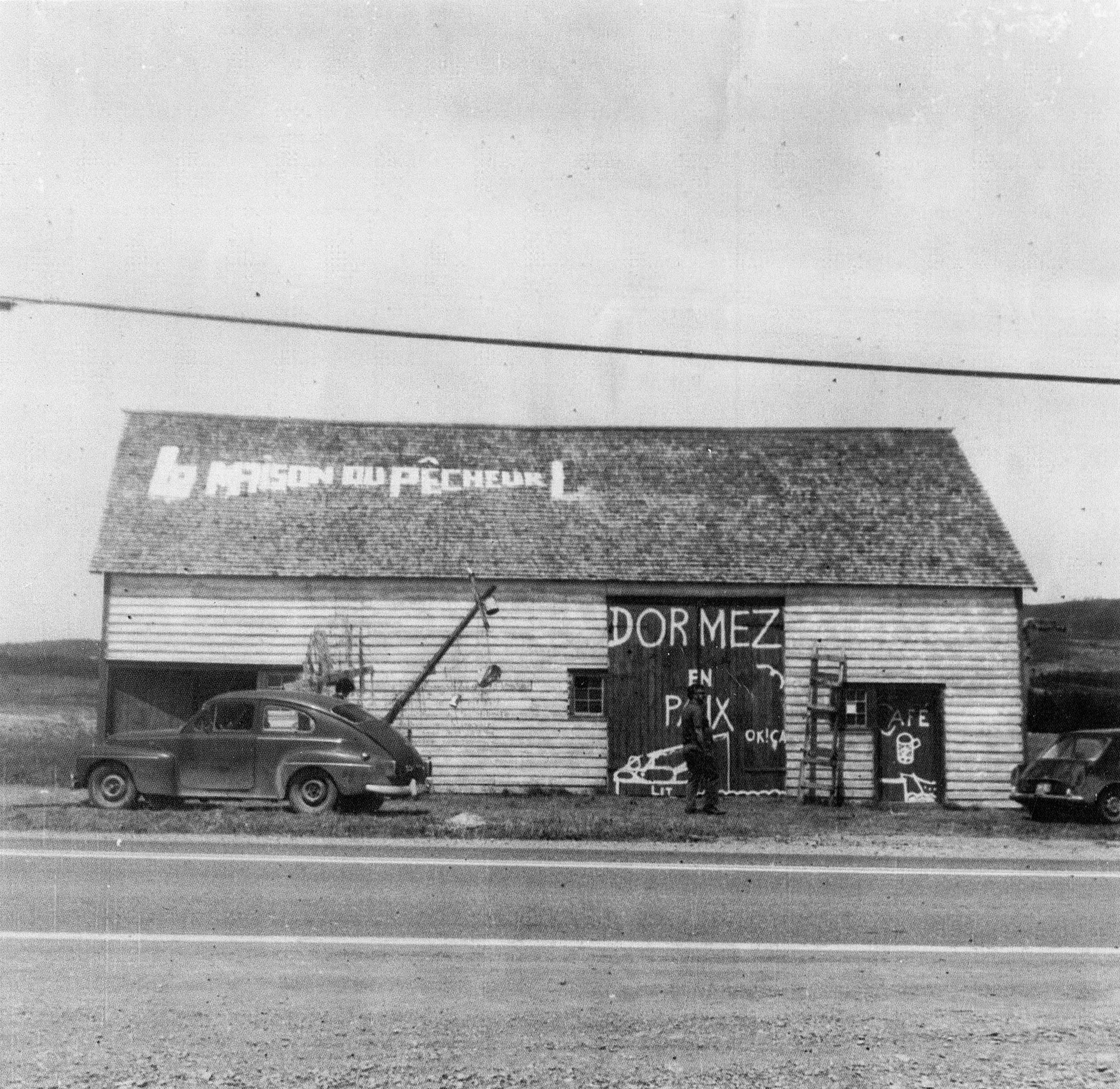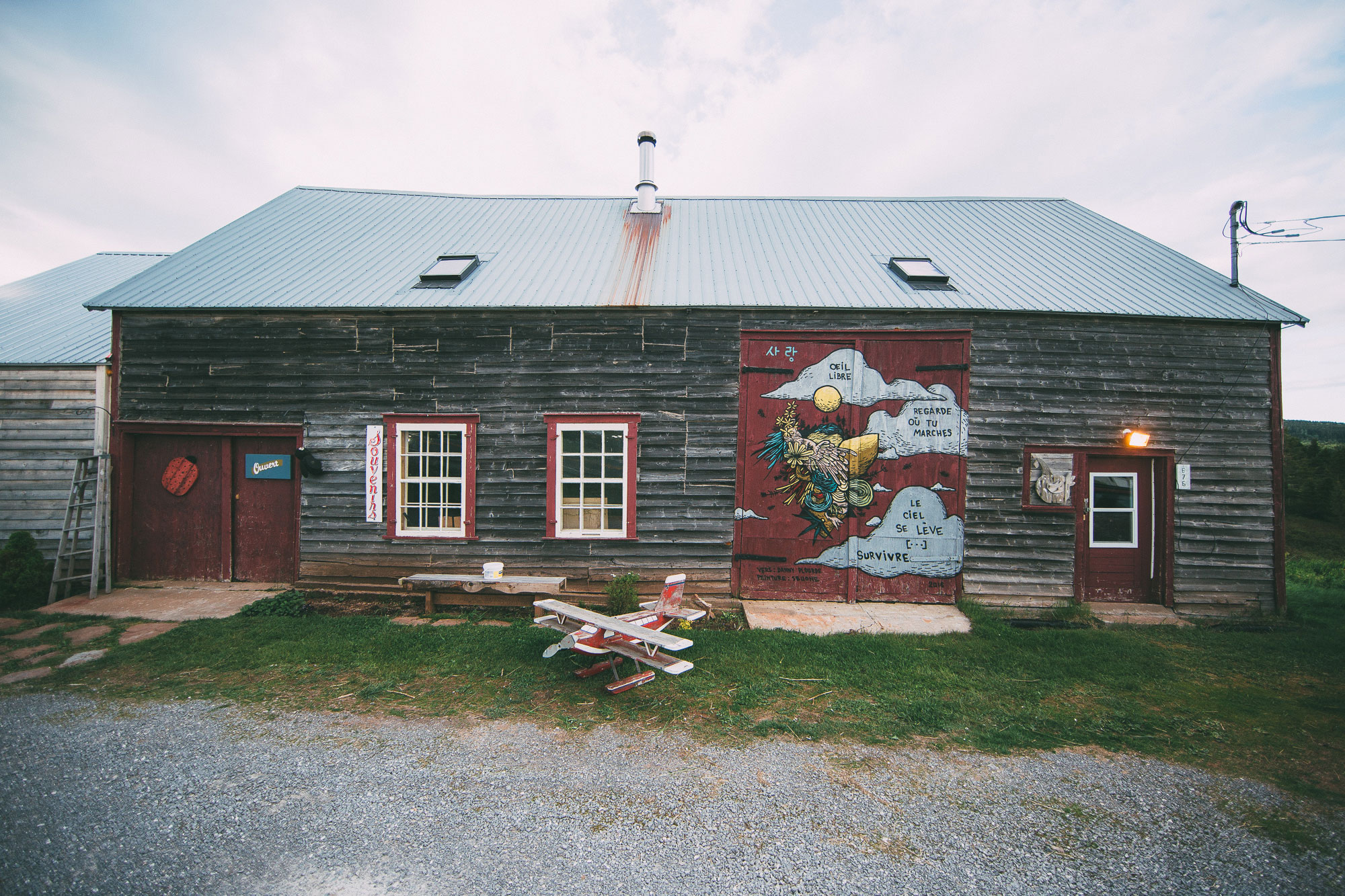I saw the mural from a distance. Hand-painted, spanning both doors of a worn wooden building.
“Oeil libre
Regardes où tu marches
Le ciel se lève
[…]
Survivre”
I never quite figured out what the poem meant. It references freedom and a rising sky, and survival, but it felt incomplete in a way. I looked up the name ‘Danny Plourde,’ to whom the credit for the verse was given. He’s a Québécois poet and writer from Saint-Jean-sur-Richelieu.
I never found exactly where the poem came from, but I did find a blog post from last summer entitled Regardes où tu marches, in which Plourde hiked some of the same mountain passes I hiked when I was 15 and living in the Gaspésie. “Est-ce que le Québec est libre ?” he wrote. “Non. Mais nous, nous le sommes, nous le serons toujours. Tant et aussi longtemps que nous aurons des mains pour nous entraider.”
“Is Québec free? No. But we, we are, and we will always be. As long as we have hands to help each other.”
I knocked on the door and met Pascal, a local artisan who works out of the building. He told me he had invited a friend to paint the door last year, I think, and the choice to quote Danny Plourde had come from the artist. Pascal talked to me for a while about the history of the building as the sun disappeared behind the clouds on the western horizon, and that’s what I’m going to try to share.
That poem, these photos, his French accent, this story—they’re all completely beautiful and utterly challenging. I feel way over my head in terms of my ability to understand what exactly this history holds, but I’m going to do my best.


“This is Pascal Riopel of Percé,” he said, “in the second Maison du pêcheur.”
The history of his building is deeply connected to the Front de libération du Québec (FLQ). The group began in the early 1960s and became a militant part of the Québec sovereignty movement, which had been growing since the Quiet Revolution.
It’s worth mentioning that around this time and place there was also the antiwar movement in opposition to the Vietnam War, and the Civil Rights Movement, as well as second-wave feminism, the Stonewall uprising and the American Indian Movement. A lot of the counterculture of the 1960s and the New Left is embedded in American history but it was never isolated from Canada. Historians point to a growing sense of Canadian nationalism in response to anti-Americanism, which in part led to a radical seperatist nationalism that struck deep in the Québec working class. Describing the 1960s in Canada, scholar Bryan Palmer wrote, “We live, to this day, in the infinitely creative and politically destabilizing wreckage of a period in Canada’s past that brought down with decisive finality what needed dismantling.”
All that is to say that the FLQ was not isolated from other counterculture movements throughout the 1960s and 70s. It wasn’t for no reason that an FLQ leader Pierre Vallières wrote Les Nègres blanc d’Amérique comparing French Canadians to the exploitation of Blacks in the USA.
When I think of the 1960s, however, I think of places like New York City and San Francisco, not a small fishing village on the coast of the Gulf of St. Lawrence.
Gaspésian historian Jean-Marie Thibeault explains that the origins of the Maison du pêcheur were in a planetary movement. “There was turmoil all across the world. There was the crisis in Cuba, while in the United States Martin Luther King advocated for Black liberation. There was the events of 1968 in France and the Cultural Revolution in China. It was youth, in all of humanity, waking up.”
He says that there were different capitals around the world for this kind of youth awakening.
“In the United States, it was San Francisco. In Québec, it was Percé. You could see young people hundreds of kilometres away hitchhiking their way to Percé.”
By 1969, Percé had for years been a gathering place for Québécois youth, artists and activists; galvanized by antiwar marches, student uprisings and liberation movements. It was in that milieu that Paul Rose, a leader in the Québec sovereignty movement, arrived, and in that milieu that he and his friends organized French resistance to English dominance—the first steps towards the October Crisis.
The concept of the Maison du pêcheur was to create a place for meetings and the exchange of ideas. It was one of many across Québec, like a Maison du mineur in Abitibi and a Maison du bûcheron in Saguenay-Lac-Saint-Jean.
It led, however, to confrontations between some of the Percé villagers and the newly arrived youth, because the Maison de pêcheur was underselling other tourist destinations. “The youth of the FLQ were chased out of the village,” explained Pascal, “so [the following summer] they re-established a place outside of Percé, the second Maison du pêcheur. It was like a youth hostel, really, with Paul Rose and his friends discussing their ideas, dreaming of making Québec a free nation.”
“They spoke a lot about unemployment,” Pascal added. “This was always the capital of unemployment, because the fishermen would work for the factories three months a year and the rest of the time there was nothing. There was nothing they could do. It was the factories who decided.”
There were networks of felquistes throughout Québec, but from around 1967 to 1970, Percé was a key gathering place. The Chénier Cell of the FLQ, named for a rebel hero of the 19th-century Lower Canada Rebellion and eventually responsible for the militant action that led to the 1970 October Crisis, spent the summers of 1969 and 1970 in Percé.
Francis Simard, one of the Chénier members, described their growing determination. “In Percé and in Gaspé, we talked with hundreds of people. What came back, each time, was the absence of means, the isolation. People wanted to fight for a better life.”
The October Crisis, which saw the kidnapping of British diplomat James Cross and murder of provincial cabinet minister Pierre Laporte, resulted in the invocation of the War Measures Act and the deployment of Canadian Forces throughout Québec, and led to a significant loss of support for the violent wing of the Québec sovereignty movement. It also led to consequences for the young people still in Percé.
“There were a lot of arrests,” explained Pascal. “It was rough. They were associated with men that were now considered terrorists. That was the worry after the October Crisis, so many of them were arrested.”
The Gendarmerie royale du Canada (also known as the Royal Canadian Mounted Police) rented a neighbouring house and monitored the Maison du pêcheur, keeping notes and conducting interviews. “There are many people who say it was the GRC who lit the Maison on fire as a way to evict the youth.” The GRC did burn down a farm associated with the FLQ near Montréal in 1972.
“They were many young people who were questioned by the GRC, what they were doing, what was happening in the barn there, but it was more or less a ‘chilling spot,’ simply that, for dreamers and idealists.”
“On continue de faire vivre la Maison du pêcheur.”
Pascal showed me a photo of the Maison du pêcheur from the early 1970s. He pointed out the painting on the same door that he had painted last year and the name emblazoned on the roof: La Maison du pêcheur libre.


I asked him where he got it. “It was a customer who came here,” he said, “a ‘trippeur’ from the 1960s who stopped and said, ‘I remember this place.’ He worked cleaning dishes in the café.”
I expected him to say it was from a governmental archive or something like that. He said it wasn’t. “I wonder if this history isn’t a bit hidden. I don’t know. Today, a group like that would be considered terrorism, so there’s not a lot of documentation.” Apart from the leftist pamphlets, the FLQ manifesto and the military-based governmental response, there’s really not a lot of easily accessible history on the early Québec separatists. It’s a history that, as far as I can tell, lives almost solely in the memories of the locals, those who were alive in the 1960s and those who were told about the early Québécois dreamers and idealists in the years following.
I knew the FLQ existed, to the extent that they had led militant action in Montréal that culminated in the death of a cabinet minister and Trudeau’s back-against-the-wall military action against the separatists, but that was pretty much it. Researching and writing this story has made me reflect on where we get our history from. From an Ontario-based education system, I had a significantly limited understanding of the Québec sovereignty movement.
On the west coast of the Gaspé Peninsula, I learned there are more layers to that story.
If you’re interested in learning more about the Maison du pêcheur in Percé and the FLQ, there is a non-documentary film that follows the story of Paul and Jacques Rose and Francis Simard. You can watch the trailer here.